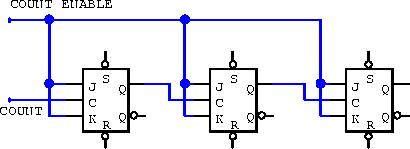
Figure 7.29: A 3-bit ripple counter constructed from JK flip-flops.
There are several different ways of categorizing counters:
Counters are also classified by their clearing and preloading abilities. The BCD type count is decimal, and is most often used for displays. In the synchronous counter each clock pulse is fed simultaneously or synchronously to all flip-flops. For the ripple counter, the clock pulse is applied only to the first flip-flop in the array and its output is the clock to the second flip-flop, etc.. The clock is said to ripple through the flip-flop array.
Shown in figure 7.29 is a binary, ripple-through, up counter.

Figure 7.29: A 3-bit ripple counter constructed from JK
flip-flops.
Because of pulse delays, the counter will show a transient and incorrect result for short time periods. If the result is used to drive additional logic elements, these transient states may lead to a spurious pulse. This problem is avoided by the synchronous clocking scheme shown in figure 7.30. All output signals will change state at essentially the same time.

Figure 7.30: A 3-bit synchronous counter.